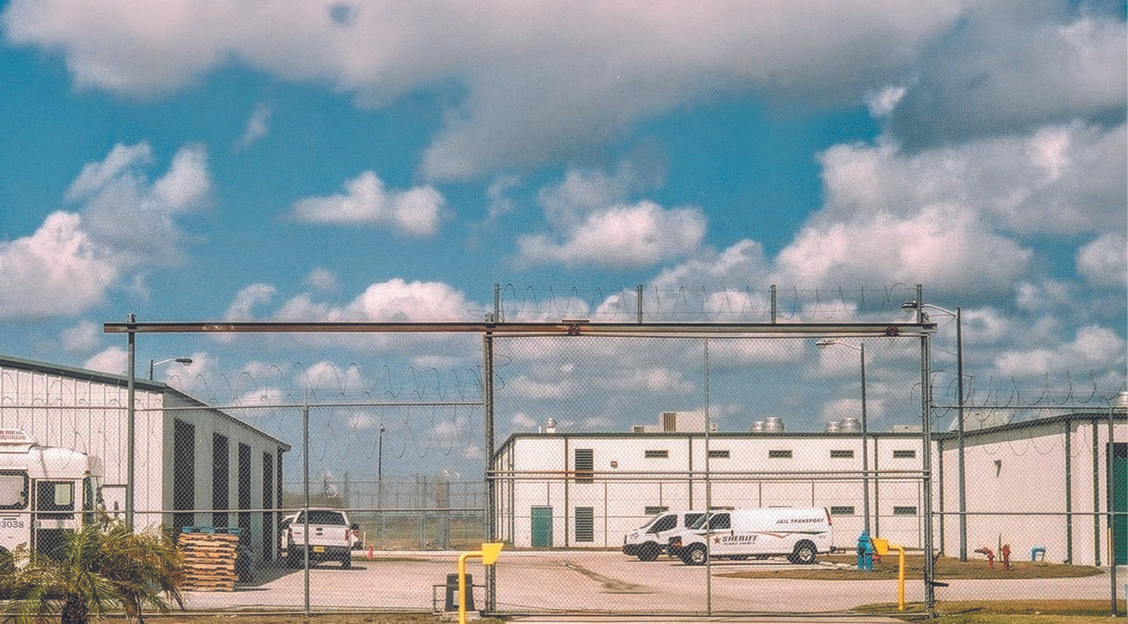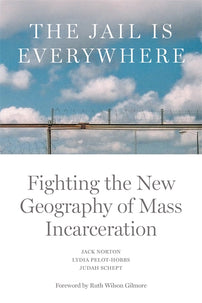The Jail is a Monster
Abolition requires we change one thing: everything.

It’s difficult to fight an adversary that keeps changing shape. The narrative momentum of horror movies depends on the terror of scary surprises to keep audiences riveted to the improbable by presenting it as inescapable—at least until some resourceful protagonists, frequently with their backs against the wall, outsmart the monster using creative aggression.
How do protagonists outsmart a monster? They figure out how it works and what it needs. The key: a combination of curiosity and persistence. Chance plays a role, but they also notice patterns—the two combined in study of the objective and subjective elements of monstrous structure and agency. In and through the process of understanding and defeating the monster, protagonists themselves change, becoming different from how they were when they started out.
The ideological, material, and political eruptions of the jail have monstrous strengths and vulnerabilities. The monster’s existential necessities are land, labor, money, and state capacity. A jail lacking opposition nestles into landscapes and consciousnesses as an appetite that naturally, necessarily, and inevitably devours people, communities, and lives.
The jail extracts people from lives-in-motion in order to extract time from them. Why time? Because it is the element, become a commodity, that enables flows of carceral cash (wages, debt service, rent, utility bills, vendor invoices, and so on). It is that commodity that inspires, as any system under racial capitalism always will, persistently innovative strategies to direct the flow toward particular coffers: salaries; agency budgets; politicians’ reelectability; construction companies and raw materials purveyors; consultants; elite landowners; investment bankers; pension fund bondholders; or other resources that, in the abstract, could be used for anything, but in the ideologically charged ongoing material present, consolidate in the carceral fix.
The commodification of an unfree person’s time doesn’t end with them being drained of their non-renewable resource, although that is more horror than anyone should bear. As with all carceral interruptions to life-in-motion, unfree persons’ households and communities also experience the drain. Not only deprived of time and money resources, they are also exposed to life-shortening effects of powerless worry and ambient toxins that, in sum, contribute to group-differentiated vulnerability to premature death.
Monstrous circular and cumulative combinations of ideology and system erupt as outcome in the form of premature death across many demographics. As is clear in many cases, a host community’s principal justification for feeding some human life-time to the monster is other humans’ future—to be secured, according to the prevailing origin-myth, by the monster itself. Hmmm. Let’s think about this a bit.
First, we see in many cases that a “need” for cages frequently isn’t self-evidently a local one; and if it is local it stems from the ability of the forces of organized violence to use laws and regulations to fine people into the lockup, using those dollars as revenue to reproduce the capacity to fine the same or similar people into the lockup. Second, we see in other cases, local need having dematerialized—for whatever reasons—that new or enhanced lockups promise future flows of money resources from other treasuries (county, state, or federal). This process persists as long as particularly categorized humans are in custody such that their extracted time can be commodified, thus transformed into the intangible but real medium through which money flows as rent, wages, interest, etc. To make a long story longer: anti-state state-capture relies on human capture to reproduce the conditions of its own reproducibility.
The anti-state state is thus consolidated through provisionally conjoining carceral capacities. What enables this consolidation is, among other things, the exercise of various petty sovereignties. Here we can note a continuum from intimate interpersonal violence, to rape, to lynching, to killer cops, to capital punishment, to war: the violent expression of the right to rule.
Organized violence self-legitimates through the threatened and actual disposal of life, interrupting some futures in order to create other futures. Meanwhile, contrary to half-baked political geographic concepts, the local state, in developing or enhancing a jail and employing uniformed personnel, exercises relative sovereignty. That sovereignty is enhanced by the capacity to kill (shoot, lock up in deadly circumstance such as COVID-19 or medical neglect), but also to take on municipal debt in order to construct and maintain the time-extraction/ revenue spigot. Debt draws from the future to arrange the present, which means the unchallenged present is, unsurprisingly, the historical geography of the future. (They’re planning jails for kids whose parents haven’t been born yet.)
Breathtakingly, organized violence’s accumulated capacities provoke giddy enthusiasm, summed up by a famous civil rights attorney who declared, “I love the police because all the politicians are afraid of them.” Thus, it is probably no wonder that a burgeoning left-fascism “research” agenda insists that “crime” must be solved by more extensive and intensive policing before inalienable means for general social welfare can happen. These presumptive tricks (police! police!) are enabled by and enable the aggrandizing telos of the carceral. They distort what contemporary abolition has persistently been about—as evidenced in organizing, congresses, documents, research, popular publications, and endless hours of podcasts. Abolition requires we change one thing: everything.
At the end the lessons are always the same: Our backs are to the wall. Be curious. Notice patterns. Start from where you’re at. Organize. Study. Read or listen. Share. Organize. A luta continua.
— An edited excerpt from The Jail is Everywhere: Fighting the New Geography of Mass Incarceration by Jack Norton, Lydia Pelot-Hobbs and Judah Schept. Foreword by Ruth Wilson Gilmore.
[book-strip index="1" style="buy"]

